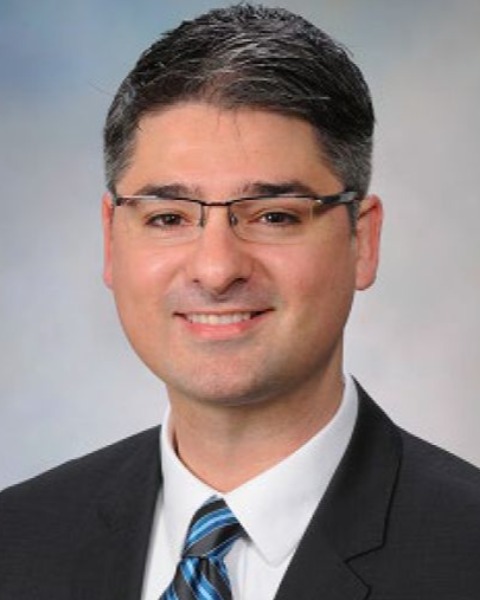SIR 2025
Embolization
Scientific Session
Management of New Daily Persistent Headache Using Lumbar Vein Embolization in Patients with Nutcracker Phenomenon
.jpg)
Samuel B. Ogunlade, MD
Research Trainee
Mayo Clinic, Florida, United States.jpg)
mohamed A K Elboraey, MD
Resident
Mayo Clinic, Florida, United States- TR
Todd Rozen, MD
Professor
Mayo Clinic, Florida, United States - AL
Andrew R. Lewis, MD
Assistant Professor
Mayo Clinic Florida, United States 
Beau B. Toskich, MD, FSIR
Professor
Department of Radiology, Division of Interventional Radiology, Mayo Clinic, Jacksonville, FL 32224, United States, United States- ZD
Zlatko Devcic, MD
Assistant Professor of Radiology
Mayo Clinic Florida, United States
Presenting Author(s)
Author/Co-author(s)
Materials and Methods: This retrospective analysis of a prospectively-maintained database included patients with Nutcracker phenomenon and NDPH (headache duration 6.4 years, range: 4–13) referred by a neurologist after failure of CSF pressure-lowering medications and other treatments. All patients had pre-embolization venography showing LRV narrowing, retrograde L2LV flow, and EVP congestion. The L2LV was embolized using microcoils or plugs. Medical records and imaging were reviewed for headache severity, venographic findings, and procedural outcomes.
Results:
Nine female patients (mean age 41, range: 19–64) were included, with a mean post-embolization follow-up of 19 months (range: 6–27). Technical success was achieved in 100%, with no retrograde flow into the L2LV or EVP post-embolization and no intra-procedural complications. Clinical success was 78%, as two patients had persistent headaches despite resolved venographic findings. The mean decrease in Visual Analogue Scale (VAS) was 5.2 (range: 0–8). Patients reported improved concentration, reduced sensitivity to light and sound, and decreased brain fog and vertigo. Six patients reduced or discontinued chronic headache medications. No flank pain, abnormal urinalysis, or pelvic congestion symptoms were observed from the procedure. One patient had an allergic reaction to the plugs, with no headache improvement, and is undergoing treatment for the allergic reaction.
Conclusion: L2LV embolization is an effective minimally invasive alternative to surgical treatment of NCP with NDPH, demonstrating high technical and clinical success rates. Most patients experienced marked relief from headaches and decreased medication usage. This is a highly selective group of patients treated in collaboration with a headache neurologist; we do not recommend routine lumbar vein embolization in the setting of NCP. The possibility of a placebo effect exists, and our team is currently enrolling patients in a formal clinical trial to rigorously study this procedure.


.jpg)